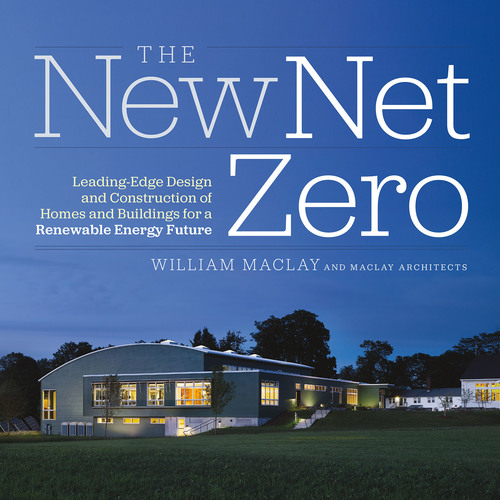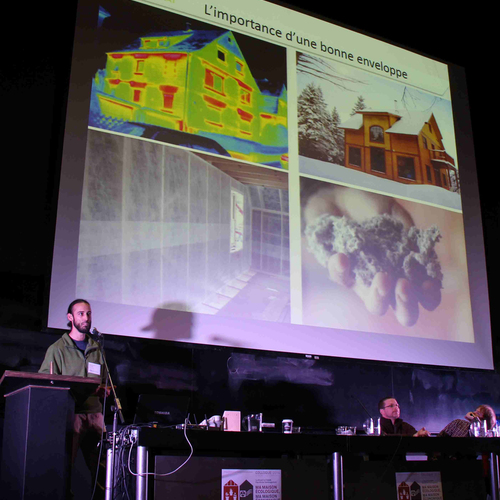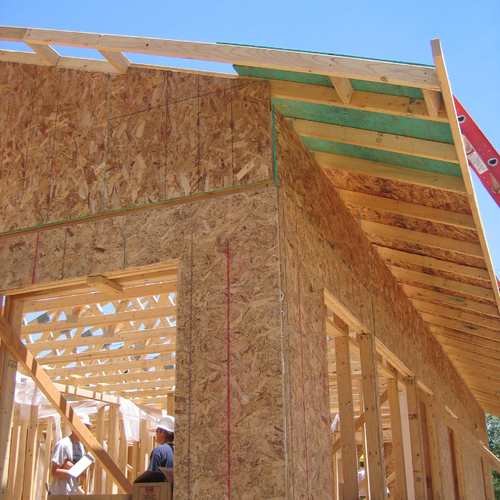
Back in 2008, I was hired to join a team of writers and editors who were developing a web site called Green Building Advisor. In the 15 years since I joined GBA, our understanding of green building has changed. Some of these changes are due to technical developments; some are due to code changes; some are due to an improved understanding of how construction affects the natural world; and some are due to cultural changes introduced by GBA authors.
Any attempt at pinning down this topic—“How green building has changed”—faces challenges. Green building is an amorphous blob with no clear definition, and there are at least two ways my analysis can stray from the truth: I can be wrong in my description of green building in 2008, and I can be wrong about my description of green building in 2023.
These potential errors are stumbling blocks, so readers should take my analysis with a grain of salt. As an anchor for my analysis, I will use a book by David Johnston and Scott Gibson, Green From the Ground Up, as my starting point. There are three virtues to my decision to use this book as an anchor: it’s a reference work that can be cited; it was published in 2008, the starting point of my investigation; and it was published by a reputable company, Taunton Press.
All of that said, my choice to use Green From the Ground Up as a starting point is admittedly arbitrary.
My current understanding of green building is somewhat biased, having been shaped by the authors invited to write for GBA. Green builders, in my opinion, strive to build energy-efficient buildings that have a minimal impact on the natural world. These buildings should be resource-efficient and should try to minimize emissions of gases that contribute to global…
Weekly Newsletter
Get building science and energy efficiency advice, plus special offers, in your inbox.

This article is only available to GBA Prime Members
Sign up for a free trial and get instant access to this article as well as GBA’s complete library of premium articles and construction details.
Start Free TrialAlready a member? Log in















21 Comments
Great summary and very interesting to reflect back. The reduced cost of solar may be what has made the biggest difference.
How about another article with a summary of what you expect to change in the next 15 years. Will ground-source heat pumps come back? What dehumidification strategies will be used if dew points nearing 80 F are common?
Fun article! Yes, it is interesting to look back and see what caught on and what didn't (which is not necessarily what worked best and what didn't).
Martin, if you felt so inclined, a companion piece looking FORWARD 15 years could be interesting. I'm not asking you to predict the future. But I'd be curious to hear where you think things might end up 15 years from now.
Something I hope to see in the next 15 years is a better use of natural lighting, not just for the energy savings aspect, but also because it is more conducive to human health. Having to turn the lights on indoors on a sunny day usually indicates a design failure.
We still have a long way to go in really considering the GWP impact of our building materials. Hopefully materials with lower impact will become more readily available and builders will educate themselves on how to use them.
As far as single family residential construction, I wish we could foster a culture of DIY for homeowners, where more people realize they have the option and ability to build their own homes. By contributing their own labor they can save money and also implement some of the best materials choices, which tend to be labor intensive and therefore uneconomical for commercial builders.
To help with that in my own small way I'm going to be starting a series of blog posts and videos to help regular folks learn the basics on home design and construction.
For any of you who have not heard of the CobBauge Project I encourage you to do a quick Google search. It's a joint British/French research project on updating cob construction to make it more energy efficient and easier for homeowners to take on themselves. I think it has a lot of potential. I'm also thrilled to see the IRC incorporating sections to allow for cob/straw/adobe construction.
Another vote for a 15 year forecast article from Martin.
And another vote for increased attention to daylighting. Efficient building works best and is most readily adopted when it increases overall health and wellbeing.
Charlie and Jolly Green,
I'm notoriously bad at predicting. I'll note, however, that the future of rooftop PV will depend more on the availability of net-metering agreements from local utilities than on the cost of PV modules.
Here's a prediction: the trend toward all-electric homes will continue, and the popularity of appliances that burn natural gas or propane will fade.
Those seem like pretty sound predictions. One of the hesitations people sometimes have about all electric is that backup for power outages becomes harder. But I expect that with more people having large batteries parked in their driveways, it will become common to get set up to use the car battery for backup power. Ideally batteries will also become enough cheaper that they become easy to justify for overcoming problems with unfavorable net metering situations. (It's hard to use a vehicle battery for that when it's not home during many of the daylight hours.)
I wonder what the future is for Net Zero? It is mentioned in our codes here as a goal, and has gained a lot of attention from politicians, but it's an amorphous concept. I'd make a prediction, but I'm also notoriously poor at them.
I read Scott and David's book in 2008 and found it very well organized and clearly written, and just the right amount of information for a budding "green" designer who really didn't know much about green building yet. In planning the Pretty Good House book we referenced it as a good model for how to present information. It's interesting to see how much the basic elements of "green" building have changed in 15 years!
I'd argue that passive design principles have not faded away, despite energy modeling (and confirmation from built homes) that show insulation and air-sealing to be more important, and by the questions readers ask here almost daily. But there is definitely a broader understanding now of the differences between over-glazing and right-sizing the glazing.
I'd also say that the earlier focus on natural materials hasn't gone away, but it has largely shifted to a preference for materials with low embodied carbon, which isn't directly related to natural materials but there is a lot of correlation between product classes.
From what I'm reading, dealing with winter and summer peak loads is rapidly becoming critical. I would expect that residential builders will be eventually be tasked with designing systems that help time-shift these loads (my utility is already begging me to pre-chill my house before 3 pm in the summers). With all the competing uses for lithium-ion batteries, thermal storage seems like it could gain more traction for residential use. I'd be curious to hear other thoughts on this and, if it seems likely, how it would be implemented in a residence - would we go back to ductwork or even radiators? Not sure how you can load shift using mini-splits, except with onsite battery storage.
I agree that this is an important future challenge. With air-to-water heat pumps, you can add a water tank that can be pre-cooled or pre-chilled. Such tanks are expensive now, but I think they could be much cheaper if they were mass produced, and made for l0w pressure. The heat delivery method can then be flexible: ducts, radiators, surfaces like floors, walls and ceilings, small or large fan-coil units; the small ones can be very similar to mini-split heads.
On the other hand, if someone strives to make those tanks cheaper, they will be competing with decreasing battery costs, so commercial success isn't assured. And the tanks take space.
And as much as the current thinking is that ground source heat pumps are obsolete, this could be the reason they come back. Heat storage shifts the load to a different part of a cold day, but a ground source heat pump reducing the total amount of energy needed during a cold week, rather than just shifting it around to different hours of the week or day. Even if the seasonal average efficiency isn't much better (or any better) than a good minisplit, the efficiency during the coldest times of the year can be much better.
An air tight and super-insulated house that has been designed with optimal assemblies and solar orientation will act as a thermal battery. This is essentially the Passive Building methodology. One can cool one's house down after one leaves for work and it will remain close to that temperature when you get back. The passive building methodology (and PGH's) turns a house into a thermal battery.
How does everyone feel about the new XPS that use low-GWP blowing agent? In the DMV area around Washington DC it's now easy to find: my closest Lowe's only stocks Greenguard LG and the closest Home Despot has only Foamular NGX...
... So is XPS back on the menu for me? As a Marylander I'm happy that my state was one of those few who immediately picked up leadership on this when the federal government was sabotaged, but it seem like this is the way things are going nationally in short order. Is there some remaining fault with XPS that I'm missing?
The blowing agent in the new XPS formulation is much better than the legacy versions but XPS is still much worse than EPS, polyiso or mineral wool, and far worse than wood fiber. I don't have the numbers in front of me but I have done the math and posted it somewhere on GBA. I have not found a need to specify XPS on the last 100+ homes and renovations I've designed. The only reason to use XPS is if you don't plan ahead, as it is easy to get.
Thanks for the info - I was hopeful, but suspected something like this. Polyiso is still my go-to for continuous insulation because at 1.25", R5 Rockwool Comfortboard requires furring for siding attachment.
Below-grade, the water absorption and lower compressive strength of EPS are a problem.
If you have a source for higher-density EPS such as 15 or 25 psi, I think you'll find that it has very similar working characteristics to XPS. You do get a few beads crumbling at the edges but it's pretty similar. 40 psi is very dense. 15 psi and up are safe to use below grade; the pores are so small that little water gets absorbed.
The idea that EPS wasn't suitable to below grade application has faded as long term study I have seen show performance of EPS below grade to match or exceed that of XPS.
EPS is available in compression various compression strengths. (15,25,40 psi and higher). I recommend Branch River Plastics for EPS if you are in the North East.
Yeah, I saw one such study, but it was unsourced on an EPS manufacturer's website so I filed it under the salt shaker.
It's good to have not just independent backing from you and MM, but also a recommended source. My projects are small, and while I have good commensurately small builders I work with, it's always easier to get them to divert from their usual means & methods and adhere to exact specs when I can point right at how to make the change.
So thanks, both.
The embodied carbon of various insulation materials (from the BEAM calculator based on 100 asft and expressed in kgCO2e):
Legacy XPS: 661 to 796
Reduced GWP XPS: 25 to 106
EPS: 37 to 102
GPS: 36 to 45
Polyiso: 30 to 54
Mineral wool: 34 to 107
Wood fiber: -135 to -57
Cork: -89
I had a similar thought on reading this--haven't seen XPS with old high GWP blowing agents in a while. Those blowing agents are banned in twelve states & Canada, so XPS and closed-cell spray foam are much less terrible now. (Other issues remain of course.)
https://dcpd6wotaa0mb.cloudfront.net/mdms/dms/EIS/10024430/NA-BLOWING-AGENT-REGULATORY-STATUS.pdf?v=1618922100000%22
Doug,
Here is a link to the most up-to-date GBA article (from December 2020) on this issue: "XPS Makers Announce More Planet-Friendly Formulations."
According to Scott Gibson's article, "O’Brien-Bernini [an Owens Corning spokesman] said Foamular NGX would be available in Canada and in states with a Jan. 1 compliance date for the removal of HFC-134a—a list that includes California, Colorado, New York, Vermont, Washington State and possibly New Jersey—early next year [2021]. 'We are not limiting the availability of NGX. Our intent is to make NGX available throughout North American to any customer that wants to purchase NGX,' he said. 'NGX has virtually all of the same performance attributes as our current Foamular product line, and can be used in all of the applications into which we currently offer Foamular.' The R-value of 5 per inch is unchanged, but the NGX is likely to cost more than its predecessor. O’Brien-Bernini wasn’t specific, saying only that the price will be 'set by the market.' HFO blowing agents cost significantly more than the HFCs the industry has been using."
I'd be interested to hear from GBA readers who have recently bought XPS. Is Foamular NGX easy to buy where you live?
Great reflections. The building science will continue to evolve. I guess that is why they call architecture a "practice". I was fortunate to take a 4-day certified training from David Johnston for Build It Green. It was a great course and really added to my understanding. I still think the principles of passive solar are valid and important for orientation and daylighting. Hard to go too far wrong with a home that is well insulated and air tight.
Looking into the future, I see bi-directional EV chargers along with electric heavy vehicles becoming part of our built environment's energy system. Still excited for what lies ahead.
I hope the 'Pretty Good House' principles will pick up steam and continue for years to come. I bought a copy despite having already read about everything it covers on GBA and Fine Homebuilding et al. Much appreciated. I agree with AI 's opinion of Martin's advice.
One thing that excited me when I read about it was the experiments using mycelium to grow houses. It is possible to buy kits to grow your own which should lead to a lot of innovations. There is a company in New York state , I believe, which not only produces packing material but also sheet goods and other building materials from organic substrates like straw and wood fiber. Also trees grown to specs and used pretty much as is, ( think teepees) is an old technology that deserves another look..
Also as our houses become more electrified wood fired steam turbines could be sized and as affordable as independent backup for power much as gas powered generators are now. Walking around the woods near the house there is more volunteer firewood than I can manage.
Log in or become a member to post a comment.
Sign up Log in